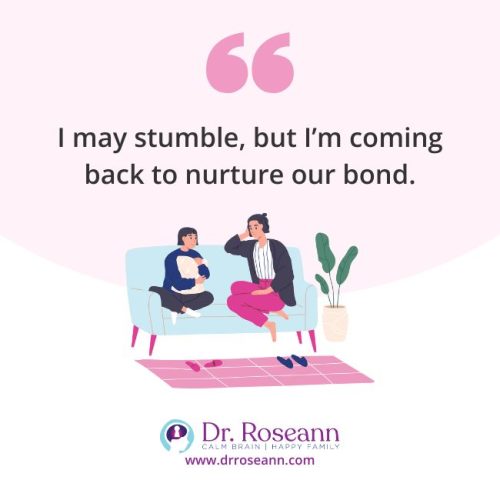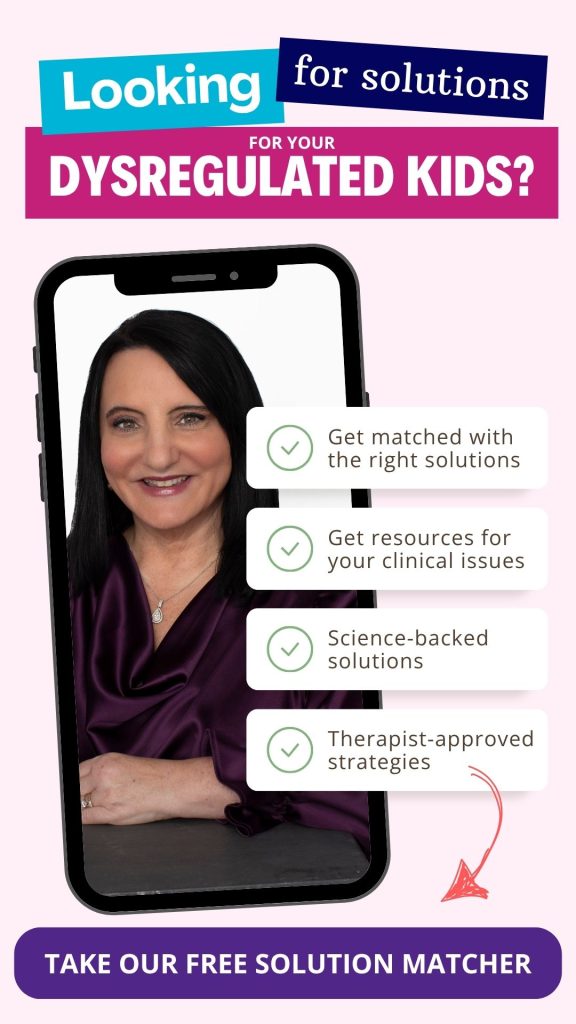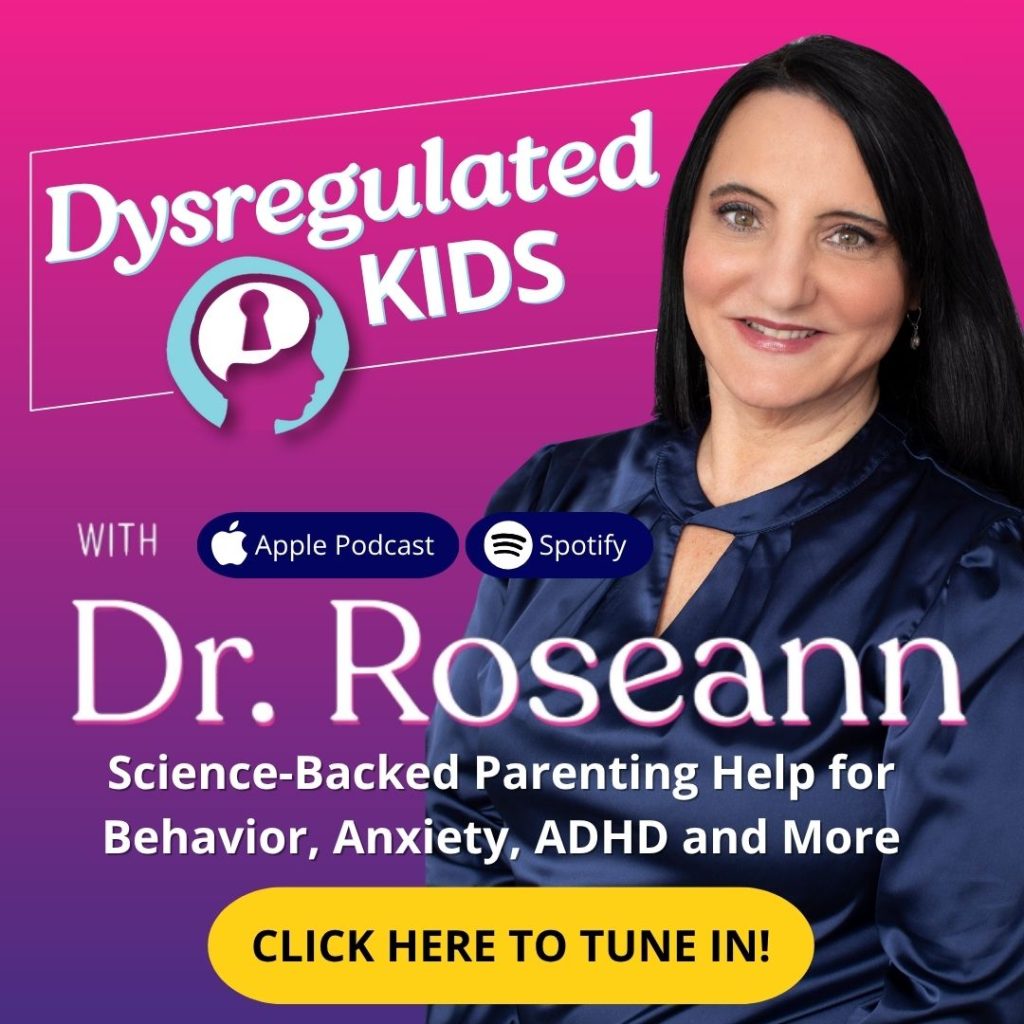Estimated reading time: 7 minutes
Imagine this: what if those tough moments — when your child is melting down and you’re at your wit’s end — could actually strengthen your relationship instead of tearing it apart?
The truth is, they can.
How we respond when our kids lose it plays a big role in how they learn to manage big emotions. And when we focus on repairing relationships after those blowups, we’re not just calming the chaos—we’re rebuilding trust and connection.
In this blog, you’ll learn:
- How to reconnect after emotional ruptures
- Why repair matters for your child’s brain
- Simple language you can use (yes, even when you’re exhausted)
- Real parent stories to remind you you’re not alone
- Easy tools to help you practice repairing relationships with confidence and heart
Why is repairing relationships so important after a meltdown?
Relationship repair after a dysregulation episode creates the emotional safety your child’s brain needs to rebuild regulation pathways. When you intentionally repair, you’re not just saying sorry, you’re literally helping their brain build healthy regulation circuits.
Neuroscience shows that the neural pathways between the prefrontal cortex, anterior insula, and amygdala, responsible for emotional control are sculpted through relational interactions like attunement and repair.
Over time, these pathways become stronger with practice
- Attachment researchers found that dyads who repaired over 50% of their mismatches had children with better emotion regulation and fewer behavior problems over time.
- Ed Tronick, PhD explains, “A successful reconnection and repair process teaches children that mistakes are normal and can be resolved … the cycle of discord, reconnection, and repair promotes growth and resilience.”
- Repair helps your child internalize self-soothing tools—when you do it, eventually they can too, because behavior is communication.
How do I calm myself so I can reconnect?
Before you bridge back to your child, you must model the emotional maturity you want to teach. That means calming yourself first — not ignoring your feelings, but noticing them and responding with intention.
| Step | What to do | Why it helps |
| Pause physically | Press pause: hands on heart or slow breaths. | Shifts your physiology out of fight/flight. |
| Label your feeling | Silently note: “I’m tired,” or “I feel frustrated.” | Naming emotions engages the frontal brain and reduces overload. |
| Externalize briefly | Say to yourself: “Just one moment—pause.” | Gives the brain a marker to reset. |
| Sensory reset | Dim lights, soft music, comfortable position. | Reduces sensory load and helps shift mood. |
| Ask this inward question | “What would calm me if I were them?” | Fosters empathy and shifts focus from shame to safety. |
You can’t breathe peace into your child if your own nervous system is holding onto storm. Let’s calm your brain first, then your presence becomes the safety cue they’ve been craving. That’s true co‑regulation—and it rewires more than meltdowns.
Remember: even 30 seconds of self-awareness and calm before repair sends the deeper message.

What words can help rebuild trust afterwards?
Even in the strongest relationships, words are your rebuilding tools. Intentional, empathic language reassures your child that their safety matters and that connection survives spikes of chaos.
What to say and why it works
- “I’m sorry I lost my calm—I know that must have felt scary.”
Takes full ownership and names the emotional context—you’re saying: “I made a choice, not you. Our bond is stronger than my outburst.” - “I care deeply about how you feel—even when I get overwhelmed.”
Validates their inner experience. Coaches like Dr Sarah Bren emphasize that empathy fosters emotional attachment and trust through repair cycles. - “I love you—even if sometimes I don’t get it right.”
Reinforces unconditional love. Keeps connection intact even when things go off script. - “Would you like to talk about what happened… or just be together quietly for a bit?” (optional)
Gives them autonomy. Invites regulation without pressure—a powerful co‑regulated reconnection.

When and how should I apologize to my child?
A well-timed, ownership-based apology is one of the most powerful “repair tools” you can offer after a rupture.
Pick the right moment
Wait until calm is truly back on board.
- Pause until bodies are settled. Children (and parents!) need their stress systems to reset before they can hear an apology; repairing in the heat of cortisol spikes often backfires.
- There’s no expiration date. Studies on “mismatch-repair” cycles show that reconnection hours—or even days—later still rebuilds attachment security.
- Check your own pulse first. A parent who apologizes while still dysregulated may unintentionally convey continued threat.
My quick script:
“I’m sorry I shouted. That must have felt awful. I love you, and I’m working on taking a breath first next time. Would you like a hug or some quiet time together?”
This simple trio – own the behavior + name their feeling + reassure the bond – turns apology into a brain-calming, trust-building superpower.
What should I do if my child doesn’t want to engage in repair?
It’s okay, they may need to emotionally “come down” before repairing. Pushing when they aren’t ready can create more distance—not safety.
This is not defiance—it’s self‑protection. You’re not alone. Let’s prioritize emotional safety and rebuild trust gradually.
Steps You Can Try:
- Pause and hold space
Let the emotional “shock” settle. Stay present. Your calm, silent presence communicates: I’m not going anywhere. - Offer repair options—once, maybe much later
When things are calmer, gently say:
“I’d really like to hug, talk, or just hang out when you’re ready. I’m here.”
No pressure. Just space and availability. - Let them take the lead
If they offer a hug, an eye‑contact check, or grunt, take it. Say:
“Thank you for sharing that with me when you felt safe enough.”
You’re encouraging their nervous system to come back online in its time. - Stay centered in your own calm brain
Keep breathing, grounded in your body, not in shame or guilt. Watch: this teaches co-regulation by modeling, not controlling. - Keep the invitation open
If nothing happens today, repeat tomorrow. Children internalize the message:
Why This Works
| What It Does for the Child | Why It Helps |
| Gives them neuro‑breathing time | Children step out of dysregulation only when their brain is ready—not when we demand it. |
| Affirms your calm predictability | Stability builds repair trust, which aids their brain in wiring regulation circuits. |
| Supports their autonomy | When they choose the moment, they rebuild control and safety—core for emotional recovery. |
How can I prevent meltdowns from rupturing trust again?
Repair doesn’t just happen after—they learn resilience through intentional prevention.
- Proactive connection times: extra cuddle, story-time, check-ins.
- Teach emotional vocabulary: label big feelings before they explode.
- Create a “calm tool kit”: visual, sensory, or word-based repair strategies.
Encourage self-validation: “Tell me, what helped calm your brain?” Teaching them language helps them self-regulate later.

Parent Action steps:
FAQs
How long should I wait before trying to reconnect after a meltdown?
Wait until both of you have had time to self-soothe. That might be minutes—or hours. Repair is more effective when you’re calm.
What if my child says, “Stop apologizing already”?
Say, “Okay, I’ll pause,” and give them space. Try again later when they’re more receptive.
Should I always apologize even if my child escalated first?
You don’t need to apologize for setting limits—but you can apologize for how you managed the moment: “I lost my cool and I’m sorry—I want to do better.”
My teen is embarrassed by public meltdowns. When is repair best?
Choose a private, non-judgmental moment: in the car, before bed, or walking together—times they feel safe.
Does repair work even if they don’t accept it initially?
Yes. Just knowing the door is open, and you’re emotionally available—even if ignored—supports trust over time.
Citations:
- Kaldewaij, R., Koch, S. B. J., Hashemi, M., Zhang, W., Klumpers, F., & others. (2021). Anterior prefrontal brain activity during emotion control predicts resilience to post‑traumatic stress symptoms. Nature Human Behaviour, 5, 1055–1064. https://doi.org/10.1038/s41562‑021‑01029‑w
- Lu, H., Rolls, E. T., Liu, H., et al. (2025). Genetic risk‑dependent brain markers of resilience to childhood trauma. Nature Communications, 16, Article 6219. https://doi.org/10.1038/s41467‑025‑61471‑0
- Christian, M. S., et al. (2014). Emotion regulation in parenthood: The unique demands of caregiving and their neuroscience implications. Developmental Review, 34, 232–247. https://doi.org/10.1016/j.dr.2014.01.001
Dr. Roseann Capanna-Hodge is a licensed mental health expert that is frequently cited in the media:
- WhatToExpect.com The Different Parenting Styles
- Insights to Live By (Podcast) Parenting for Mental Wellness
- The Creative Clinician’s Corner (Article) Helping Parents Get Unstuck
Always remember… “Calm Brain, Happy Family™”
Disclaimer: This article is not intended to provide health advice. It is recommended to consult with a physician before beginning any new wellness program. The effectiveness of diagnosis and treatment varies by patient and condition. Dr. Roseann Capanna-Hodge, LLC does not guarantee specific results.
Are you looking for SOLUTIONS for your struggling child or teen?
Dr. Roseann and her team are all about science-backed solutions—so you are in the right place!
©Roseann Capanna-Hodge










